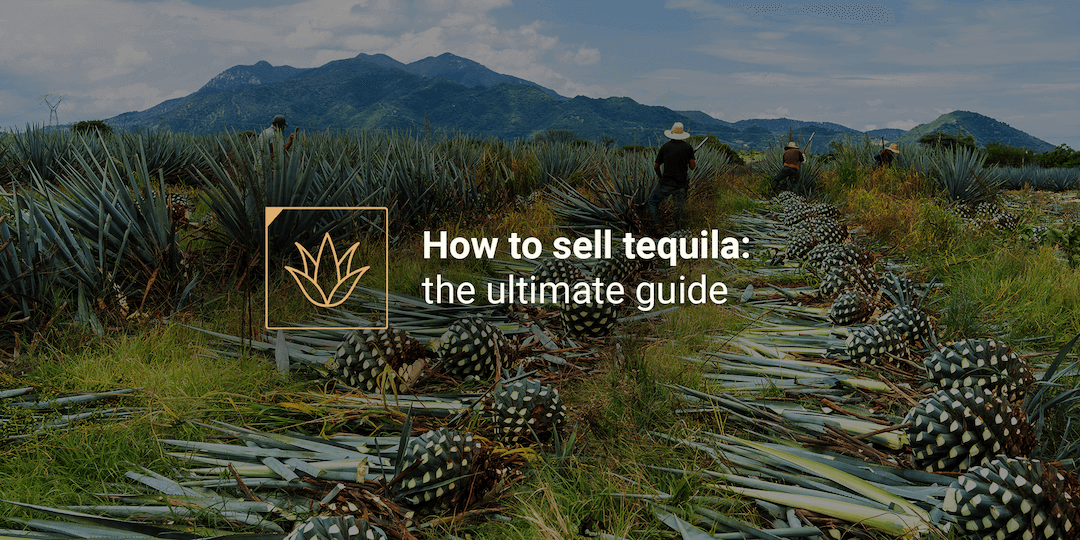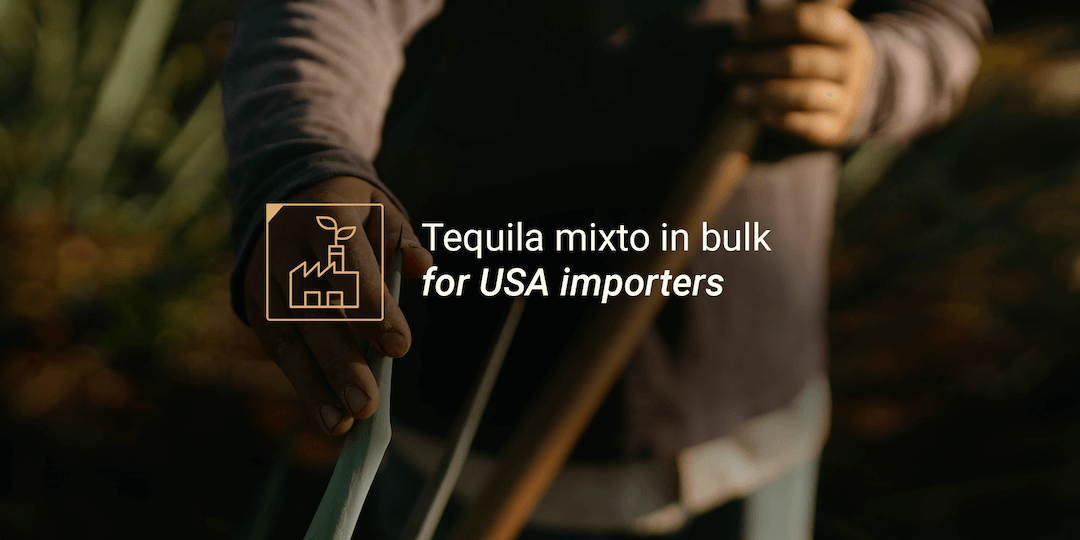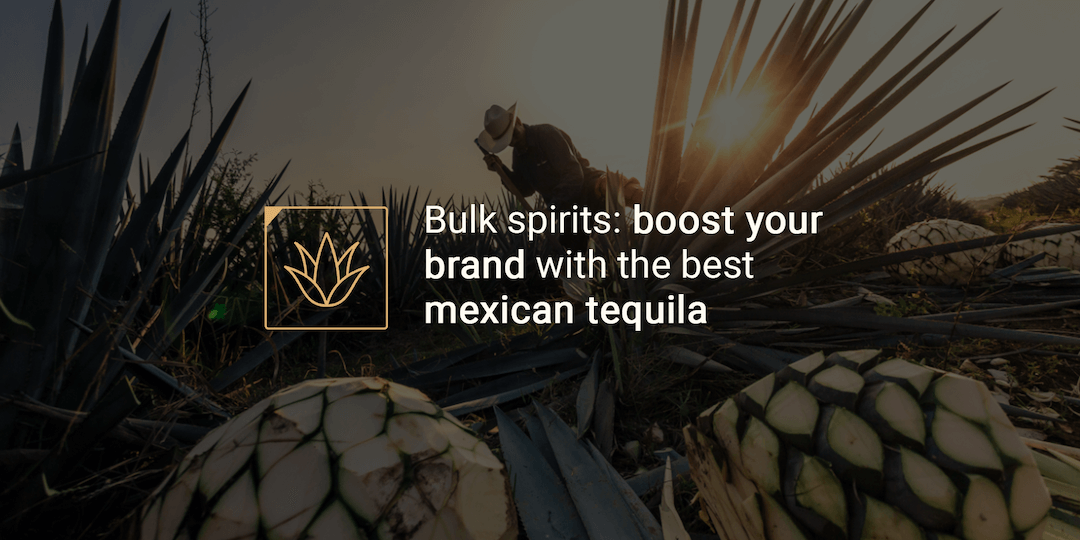Agave spirits vs tequila: differences, taste and types
Agave spirits and tequila are often confused, but they are distinct products with unique characteristics.
Understanding the differences is essential for consumers, distributors, and businesses to make informed decisions.
Whether you’re exploring new flavors or sourcing products, this knowledge will guide you. Keep reading to discover the key differences and why it matters.
What are agave spirits?
Agave spirits are a category of distilled alcoholic beverages made from the agave plant, a succulent native to Mexico.
While tequila is the most famous of these spirits, there are several other varieties of agave spirits that differ in production methods, taste, and geographic origin.
Understanding the broader category of agave spirits is essential for both consumers and businesses seeking to diversify their product offerings.
Types of agave spirits
The most well-known agave spirits are mezcal and tequila, but there are various other types that fall under the same category.
Here are some of the key types:
- Tequila: Made primarily from blue agave, tequila is produced in specific regions, mostly in Jalisco. It is the most regulated and widely recognized agave spirit.
- Mezcal: Produced from any variety of agave, mezcal is typically smokier due to the traditional method of cooking the agave in underground pits. It’s a spirit rich in tradition and craftsmanship, often seen as the more artisanal counterpart to other Mexican beverages.
- Raicilla: Sometimes called "Mexican moonshine," raicilla is made from a variety of wild agave species, primarily in the states of Jalisco and Nayarit. It has a distinctive, often fruity or herbal flavor.
- Bacanora: Originating in the state of Sonora, bacanora is made from a type of agave called Agave angustifolia and has a unique earthy flavor. It’s a lesser-known agave spirit but rapidly growing in popularity.
- Sotol: Technically not made from agave but from the Dasylirion plant, sotol is a cousin of agave spirits. It has a grassy, herbal flavor and is mostly produced in the northern regions of Mexico.
The varieties of agave used in spirits
The term "agave spirits" encompasses a variety of agave species that contribute to the different types of spirits.
The variety of agave used plays a significant role in the flavor profiles of the final product.
Here are some of the key types of agave used in production:
- Blue Agave: The primary agave used for tequila, known for its sweet, fruity flavor when distilled.
- Espadín Agave: The most commonly used agave in mezcal production, known for its smoky flavor due to the traditional cooking process.
- Tobalá Agave: A wild agave that’s prized in mezcal production for its complex and fruity flavors.
- Madrecuixe Agave: Used in some artisanal mezcals, this agave gives the spirit a rich, earthy flavor.
Tequila: a unique agave spirit
Tequila is one of the most famous agave spirits in the world, renowned for its unique production process, rich history, and vibrant flavor.
While it shares some similarities with other agave spirits, it is distinguished by strict regulations that define its production, as well as the specific regions in which it can be made.
Understanding what sets tequila apart from other agave spirits is key to appreciating its distinctive qualities and craftsmanship.
The agave spirit vs tequila
While tequila is technically an agave spirit, it is subject to a set of rules and regulations that make it unique.
The most significant difference between tequila and other agave spirits lies in the type of agave used and the geographical restrictions on where it can be produced.
Here’s a closer look at the defining factors that set tequila apart:
- Type of agave: Tequila can only be made from the blue agave (Agave tequilana), a species that is primarily grown in the region surrounding the town of Tequila. Other agave spirits, like mezcal, can be made from various types of agave plants.
- Geographical restrictions: Tequila can only be produced in specific regions of Mexico, which are regulated by the Mexican government. These regions are mostly located in the state of Jalisco, but tequila can also be produced in parts of neighboring states such as Nayarit, Michoacán, and Guanajuato. This regional limitation ensures the authenticity of the spirit.
Tequila regulations and certification
To ensure quality and authenticity, tequila production is governed by several regulations and certifications that control everything from the type of agave used to the distillation process.
These regulations include the Denomination of Origin (DO) certification, which protects the term "tequila" and ensures that it can only be used for spirits produced in specific regions of Mexico.
The certification guarantees that tequila is made following traditional methods and meets the high standards set by the Mexican government.
Tequila producers must adhere to strict guidelines, including:
- Agave selection: Only blue agave can be used, and it must be harvested at the right time, typically after 7-10 years of growth.
- Production process: Tequila production involves a series of steps, including cooking, fermentation, distillation, and aging. These methods are highly regulated to maintain consistency and quality.
- Aging and classification: Tequila is classified into different categories based on aging. These include Blanco tequila (unaged), Reposado (aged between 2 months and a year), Añejo (aged 1-3 years), and Extra Añejo (aged for more than 3 years).
Tequila producers and their role in the industry
Tequila producers play a significant role in the quality and success of the spirit.
The production of tequila involves skilled craftsmen who understand the intricacies of the agave plant and the distillation process.
These producers not only follow strict regulatory guidelines but also contribute to the innovation and diversity of tequila offerings.
From large, well-known distilleries to small, family-owned businesses, tequila producers across Jalisco and other regions continue to uphold the tradition of tequila-making while embracing modern techniques to improve quality and meet the demands of international markets.
Differences between agave spirits and tequila
When comparing agave spirits and tequila, it’s important to understand several critical factors that differentiate the two, including their production processes, the types of agave used, and geographical restrictions.
While tequila is technically an agave spirit, it is subject to strict regulations that set it apart from other agave-based drinks like mezcal, raicilla, and bacanora.
Let’s explore these key differences in more detail.
1. Production process
The production process is one of the most distinguishing factors between agave spirits and tequila.
While both types of spirits are made from the agave plant, the methods used to extract, ferment, and distill the agave juice differ significantly.
Tequila is made primarily from blue agave (Agave tequilana), and the production process follows a defined set of steps:
- Harvesting: The agave plants are harvested by skilled workers known as jimadores.
- Cooking: The harvested agave is cooked in ovens to break down the sugars, which are essential for fermentation.
- Fermentation and distillation: After cooking, the agave is mashed and fermented. The fermentation process involves converting the sugars into alcohol, followed by distillation to produce tequila.
- Aging: Depending on the type of tequila (Blanco, Reposado, Añejo), the spirit is aged in oak barrels for various periods to develop distinct flavor profiles.
Agave spirits like mezcal, bacanora, and raicilla are made from different varieties of agave and often undergo slightly different production methods.
For example:
- Mezcal production: Mezcal, unlike tequila, can be made from a variety of agave types, including Agave espadin, Agave tobala, and many others. The agave is often roasted in earthen pits, which imparts a smoky flavor to the spirit.
- Fermentation and distillation: Like tequila, mezcal undergoes fermentation and distillation, but the use of different agave types and the roasting process contribute to its unique taste and character.
2. Type of agave
The type of agave used in the production of the spirit is a major differentiator between tequila and other agave spirits.
- Tequila: Tequila is made exclusively from blue agave (Agave tequilana), which is grown predominantly in the state of Jalisco and surrounding areas.
- Agave Spirits: In contrast, other agave spirits can be made from a variety of agave species, including:
- Mezcal: Made from Agave espadin, Agave tobala, and other varieties.
- Bacanora and Raicilla: Produced from agave species like Agave angustifolia and Agave maximiliana, each with its own distinct flavor profile.
3. Geographical restrictions
One of the biggest differences between tequila and other agave spirits lies in the geographical regions where they can be produced.
- Tequila: By law, tequila can only be produced in certain regions of Mexico, including the state of Jalisco and parts of Guanajuato, Michoacán, and Nayarit. This is regulated by the Denomination of Origin (DO) certification, which ensures the authenticity of tequila and maintains the integrity of the production process.
- Other Agave Spirits: Agave spirits like mezcal, raicilla, and bacanora can be produced in a wider range of Mexican states.
For example:
- Mezcal: Mezcal is mainly produced in the state of Oaxaca, although it is also made in other regions like Durango and San Luis Potosí.
- Raicilla: Produced primarily in the states of Jalisco and Nayarit, raicilla is another lesser-known agave spirit that offers a unique taste.
4. Flavor profile
The flavor profiles of agave spirits can vary greatly depending on the production methods and the types of agave used.
- Tequila: Tequila tends to have a cleaner, more crisp flavor, particularly in its unaged Blanco form. Añejo and Reposado tequilas, however, develop richer, more complex flavors due to the aging process in oak barrels.
- Mezcal and other agave spirits: Mezcal, on the other hand, is known for its smoky flavor, which is a direct result of the agave roasting process in earthen pits. Other agave spirits like bacanora and raicilla also have distinct flavor profiles, often influenced by the type of agave and the traditional methods used in their production.
Which one should you choose – agave spirits or tequila?
In conclusion, the choice between agave spirits and tequila largely depends on your personal preferences or business needs.
Agave spirits, with their variety of flavors and production methods, offer a diverse experience.
However, tequila stands as a world-renowned spirit with strict regulations and specific taste profiles, making it a popular choice for many.
If you're looking for something smoky and complex, mezcal (a type of agave spirit) might be the ideal option. Ultimately, both categories offer unique qualities that cater to different tastes and markets.
Ready to get into the tequila industry? Dialce is here to provide the finest quality tequila in bulk, ensuring consistency, compliance, and timely delivery for your business needs.
Contact us for a personalized quote.
Learn more about bulk tequila:
- Where can I buy tequila in bulk to distribute?
- Bulk tequila suppliers from Mexico: meet the best 3
- Tequila supply chain: get in the industry without failing






